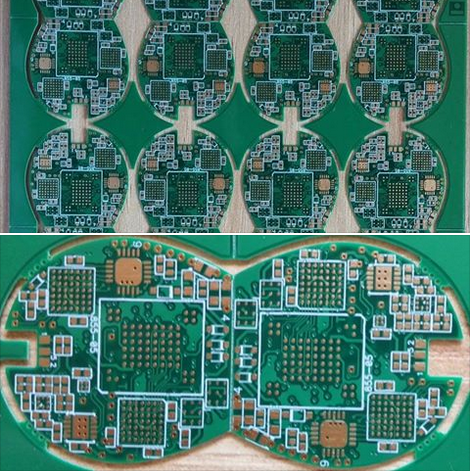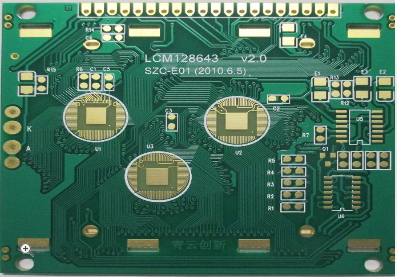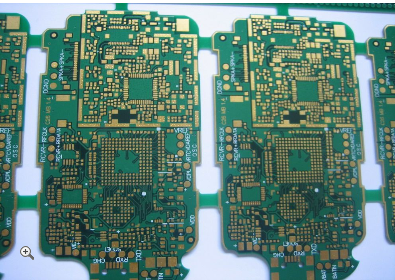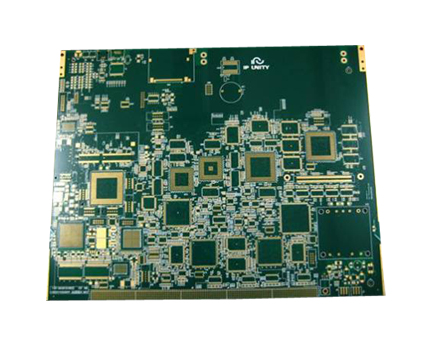-
 Agriculture
Agriculture
-
 Health-Care
Health-Care
-
 Environment
Environment
-
 Construction-Real-Estate
Construction-Real-Estate
-
 Tools-Hardware
Tools-Hardware
-
 Home-Garden
Home-Garden
-
 Furniture
Furniture
-
 Luggage-Bags-Cases
Luggage-Bags-Cases
-
 Medical-devices-Supplies
Medical-devices-Supplies
-
 Gifts-Crafts
Gifts-Crafts
-
 Sports-Entertainment
Sports-Entertainment
-
 Food-Beverage
Food-Beverage
-
 Vehicles-Transportation
Vehicles-Transportation
-
 Power-Transmission
Power-Transmission
-
 Material-Handling
Material-Handling
-
 Renewable-Energy
Renewable-Energy
-
 Safety
Safety
-
 Testing-Instrument-Equipment
Testing-Instrument-Equipment
-
 Construction-Building-Machinery
Construction-Building-Machinery
-
 Pet-Supplies
Pet-Supplies
-
 Personal-Care-Household-Cleaning
Personal-Care-Household-Cleaning
-
 Vehicle-Accessories-Electronics-Tools
Vehicle-Accessories-Electronics-Tools
-
 School-Office-Supplies
School-Office-Supplies
-
 Packaging-Printing
Packaging-Printing
-
 Mother-Kids-Toys
Mother-Kids-Toys
-
 Business-Services
Business-Services
-
 Commercial-Equipment-Machinery
Commercial-Equipment-Machinery
-
 Apparel-Accessories
Apparel-Accessories
-
 Security
Security
-
 Shoes-Accessories
Shoes-Accessories
-
 Vehicle-Parts-Accessories
Vehicle-Parts-Accessories
-
 Jewelry-Eyewear-Watches-Accessories
Jewelry-Eyewear-Watches-Accessories
-
 Lights-Lighting
Lights-Lighting
-
 Fabric-Textile-Raw-Material
Fabric-Textile-Raw-Material
-
 Fabrication-Services
Fabrication-Services
-
 Industrial-Machinery
Industrial-Machinery
-
 Consumer-Electronics
Consumer-Electronics
-
 Electrical-Equipment-Supplies
Electrical-Equipment-Supplies
-
 Electronic-Components-Accessories-Telecommunications
Electronic-Components-Accessories-Telecommunications
-
 Home-Appliances
Home-Appliances
-
 Beauty
Beauty
-
 Chemicals
Chemicals
-
 Rubber-Plastics
Rubber-Plastics
-
 Metals-Alloys
Metals-Alloys
- Masonry Materials
- Curtain Walls & Accessories
- Earthwork Products
- Fireproofing Materials
- Heat Insulation Materials
- Plastic Building Materials
- Building Boards
- Soundproofing Materials
- Timber
- Waterproofing Materials
- Balustrades & Handrails
- Bathroom & Kitchen
- Flooring & Accessories
- Tiles & Accessories
- Door, Window & Accessories
- Fireplaces & Stoves
- Floor Heating Systems & Parts
- Stairs & Stair Parts
- Ceilings
- Elevators & Escalators
- Stone
- Countertops, Vanity Tops & Table Tops
- Mosaics
- Metal Building Materials
- Multifunctional Materials
- Ladders & Scaffoldings
- Mouldings
- Corner Guards
- Decorative Films
- Formwork
- Building & Industrial Glass
- Other Construction & Real Estate
- Wallpapers/Wall panels
- HVAC System & Parts
- Outdoor Facilities
- Prefabricated Buildings
- Festive & Party Supplies
- Bathroom Products
- Household Sundries
- Rain Gear
- Garden Supplies
- Household Cleaning Tools & Accessories
- Lighters & Smoking Accessories
- Home Storage & Organization
- Household Scales
- Smart Home Improvement
- Home Textiles
- Kitchenware
- Drinkware & Accessories
- Dinnerware, Coffee & Wine
- Home Decor
- Golf
- Fitness & Body Building
- Amusement Park Facilities
- Billiards, Board Game,Coin Operated Games
- Musical Instruments
- Outdoor Affordable Luxury Sports
- Camping & Hiking
- Fishing
- Sports Safety&Rehabilitation
- Ball Sports Equipments
- Water Sports
- Winter Sports
- Luxury Travel Equipments
- Sports Shoes, Bags & Accessories
- Cycling
- Other Sports & Entertainment Products
- Artificial Grass&Sports Flooring&Sports Court Equipment
- Scooters
- Food Ingredients
- Honey & Honey Products
- Snacks
- Nuts & Kernels
- Seafood
- Plant & Animal Oil
- Beverages
- Fruit & Vegetable Products
- Frog & Escargot
- Bean Products
- Egg Products
- Dairy Products
- Seasonings & Condiments
- Canned Food
- Instant Food
- Baked Goods
- Other Food & Beverage
- Meat & Poultry
- Confectionery
- Grain Products
- Feminie Care
- Hair Care & Styling
- Body Care
- Hands & Feet Care
- Hygiene Products
- Men's Grooming
- Laundry Cleaning Supplies
- Travel Size & Gift Sets
- Room Deodorizers
- Other Personal Care Products
- Pest Control Products
- Special Household Cleaning
- Floor Cleaning
- Kitchen & Bathroom Cleaning
- Oral Care
- Bath Supplies
- Yellow Pages
- Correction Supplies
- Office Binding Supplies
- Office Cutting Supplies
- Board Erasers
- Office Adhesives & Tapes
- Education Supplies
- Pencil Cases & Bags
- Notebooks & Writing Pads
- File Folder Accessories
- Calendars
- Writing Accessories
- Commercial Office Supplies
- Pencil Sharpeners
- Pens
- Letter Pad/Paper
- Paper Envelopes
- Desk Organizers
- Pencils
- Markers & Highlighters
- Filing Products
- Art Supplies
- Easels
- Badge Holder & Accessories
- Office Paper
- Printer Supplies
- Book Covers
- Other Office & School Supplies
- Stationery Set
- Boards
- Clipboards
- Stamps
- Drafting Supplies
- Stencils
- Electronic Dictionary
- Books
- Map
- Magazines
- Calculators
- Baby & Toddler Toys
- Educational Toys
- Classic Toys
- Dress Up & Pretend Play
- Toy Vehicle
- Stuffed Animals & Plush Toys
- Outdoor Toys & Structures
- Balloons & Accessories
- Baby Food
- Children's Clothing
- Baby Supplies & Products
- Maternity Clothes
- Kids Shoes
- Baby Care
- Novelty & Gag Toys
- Dolls & Accessories
- Puzzle & Games
- Blocks & Model Building Toys
- Toddler Clothing
- Baby Clothing
- Kids' Luggage & Bags
- Arts, Crafts & DIY Toys
- Action & Toy Figures
- Baby Appliances
- Hobbies & Models
- Remote Control Toys
- Promotional Toys
- Pregnancy & Maternity
- Hygiene Products
- Kid's Textile&Bedding
- Novelty & Special Use
- Toy Weapons
- Baby Gifts
- Baby Storage & Organization
- Auto Drive Systems
- ATV/UTV Parts & Accessories
- Marine Parts & Accessories
- Other Auto Parts
- Trailer Parts & Accessories
- Auto Transmission Systems
- Train Parts & Accessories
- Universal Parts
- Railway Parts & Accessories
- Auto Brake Systems
- Aviation Parts & Accessories
- Truck Parts & Accessories
- Auto Suspension Systems
- Auto Lighting Systems
- New Energy Vehicle Parts & Accessories
- Auto Steering Systems
- Wheels, Tires & Accessories
- Bus Parts & Accessories
- Auto Performance Parts
- Cooling System
- Go-Kart & Kart Racer Parts & Accessories
- Air Conditioning Systems
- Heavy Duty Vehicle Parts & Accessories
- Auto Electrical Systems
- Auto Body Systems
- Auto Engine Systems
- Container Parts & Accessories
- Motorcycle Parts & Accessories
- Refrigeration & Heat Exchange Equipment
- Machine Tool Equipment
- Food & Beverage Machinery
- Agricultural Machinery & Equipment
- Apparel & Textile Machinery
- Chemical Machinery
- Packaging Machines
- Paper Production Machinery
- Plastic & Rubber Processing Machinery
- Industrial Robots
- Electronic Products Machinery
- Metal & Metallurgy Machinery
- Woodworking Machinery
- Home Product Manufacturing Machinery
- Machinery Accessories
- Environmental Machinery
- Machinery Service
- Electrical Equipment Manufacturing Machinery
- Industrial Compressors & Parts
- Tobacco & Cigarette Machinery
- Production Line
- Used Industrial Machinery
- Electronics Production Machinery
- Other Machinery & Industrial Equipment
- Camera, Photo & Accessories
- Portable Audio, Video & Accessories
- Television, Home Audio, Video & Accessories
- Video Games & Accessories
- Mobile Phone & Accessories
- Electronic Publications
- Earphone & Headphone & Accessories
- Speakers & Accessories
- Smart Electronics
- TV Receivers & Accessories
- Mobile Phone & Computer Repair Parts
- Chargers, Batteries & Power Supplies
- Used Electronics
- VR, AR, MR Hardware & Software
- Projectors & Presentation Equipments
- Other Consumer Electronics
- Cables & Commonly Used Accessories
- Computer Hardware & Software
- Displays, Signage and Optoelectronics
- Discrete Semiconductors
- Wireless & IoT Module and Products
- Telecommunications
- Connectors, Terminals & Accessories
- Development Boards, Electronic Modules and Kits
- Circuit Protection
- Sensors
- Isolators
- Audio Components and Products
- Integrated Circuits
- Power Supplies
- Relays
- RF, Microwave and RFID
- Electronic Accessories & Supplies
- Passive Components
- PCB & PCBA
- Air Quality Appliances
- Home Appliance Parts
- Heating & Cooling Appliances
- Small Kitchen Appliances
- Laundry Appliances
- Water Heaters
- Water Treatment Appliances
- Refrigerators & Freezers
- Personal Care & Beauty Appliances
- Major Kitchen Appliances
- Cleaning Appliances
- Second-hand Appliances
- Smart Home Appliances
- Other Home Appliances
- Energy Chemicals
- Inorganic Chemicals
- Basic Organic Chemicals
- Agrochemicals
- Admixture & Additives
- Catalysts & Chemical Auxiliary Agents
- Pigments & Dyestuff
- Coating & Paint
- Daily Chemicals
- Polymer
- Organic Intermediate
- Adhesives & Sealants
- Chemical Waste
- Biological Chemical Products
- Surface Treatment Chemicals
- Painting & Coating
- Chemical Reagents
- Flavor & Fragrance
- Non-Explosive Demolition Agents
- Other Chemicals
- Custom Chemical Services
High Performance High Frequency PCB Designs Optimized for Radar Applications
In the rapidly advancing field of radar technology, from automotive collision avoidance systems to sophisticated aerospace and defense applications, the demand for greater accuracy, resolution, and reliability is relentless. At the heart of these sophisticated systems lies a critical, yet often overlooked, component: the printed circuit board (PCB). High-performance, high-frequency PCB designs are not merely passive platforms for mounting components; they are active, integral elements that directly dictate the overall performance, efficiency, and success of the radar system. As radar frequencies push into the millimeter-wave (mmWave) spectrum to achieve finer resolution and smaller form factors, the electrical characteristics of the PCB substrate become paramount. This article delves into the specialized world of PCBs engineered explicitly for high-frequency radar applications, exploring the material science, design strategies, and manufacturing considerations that enable these complex systems to perform at their peak.
Material Selection for Optimal Signal Integrity
The choice of substrate material is the most fundamental decision in designing a high-frequency PCB for radar. Standard FR-4 materials, common in low-frequency digital applications, are unsuitable due to their high dielectric loss tangent (Df) and significant variation in dielectric constant (Dk) with frequency. These properties lead to substantial signal attenuation and phase distortion, which are catastrophic for sensitive radar signals. Instead, high-frequency laminates are employed, typically based on polytetrafluoroethylene (PTFE/Teflon™) ceramics, hydrocarbon ceramics, or liquid crystal polymer (LCP).
These specialized materials offer a low and stable dielectric constant, ensuring consistent signal propagation velocity. More critically, they exhibit an extremely low dissipation factor, minimizing signal loss as it travels across the board. For instance, in a 77 GHz automotive radar sensor, every decibel of loss translates directly into a reduction of effective range. Furthermore, the thermal coefficient of dielectric constant (TCDk) is a vital parameter. Radar systems, especially in automotive or aerospace environments, experience wide temperature fluctuations. A substrate with a low TCDk ensures that the electrical performance remains stable across the operating temperature range, preventing drift in the radar's calibration and ensuring consistent target detection.
Precision in Transmission Line Design and Impedance Control
Once the optimal material is selected, the physical design of the signal pathways, or transmission lines, becomes critical. In high-frequency PCB design, controlled impedance transmission lines, such as microstrip or grounded coplanar waveguide (GCPW), are standard. The geometry of these lines—their width, the distance to the reference plane, and the dielectric constant of the material—must be meticulously calculated to achieve a specific characteristic impedance, typically 50 ohms. Any deviation from this target impedance causes signal reflections, leading to standing waves, increased bit error rates, and reduced power transfer.
Impedance control is not a one-time calculation but a continuous concern throughout the layout process. Factors such as copper surface roughness, which increases at higher frequencies due to the skin effect, can alter the effective impedance and increase conductor loss. Bends, vias, and transitions between layers must be carefully modeled and optimized. For example, a via transitioning a signal from the top to the bottom layer acts as a discontinuity. Techniques such as back-drilling to remove unused via stubs or using specialized via structures are essential to minimize these parasitic effects and maintain signal integrity from the transmitter to the antenna and back to the receiver.
Advanced Manufacturing and Assembly Considerations
The transition from design to physical board requires manufacturing processes of exceptional precision. The etching process must produce fine lines and spaces with tight tolerances to maintain the designed impedance. Any under-etching or over-etching can alter the cross-sectional geometry of a transmission line, shifting its impedance and degrading performance. Similarly, the laminate thickness must be controlled with high precision, as it is a direct factor in the impedance calculation.
Plated through-holes (PTHs) for vias and component mounting present another challenge. The plating must be uniform to avoid impedance variations along the via barrel. For the highest frequency applications, traditional FR-4 materials are often used in a hybrid stack-up for the rigid sections of the board, while high-frequency materials are used for the critical RF layers. This approach balances performance with cost and mechanical stability. Assembly also demands attention; the use of low-loss solder masks is recommended, and components must be placed with high accuracy to minimize parasitic inductance from long bond wires or leads, which can detune the RF circuits.
Thermal Management and Reliability
Radar systems, particularly those with high-power transmitters, generate significant heat. Effective thermal management is crucial to prevent the PCB from overheating, which can lead to material degradation, delamination, and ultimately, system failure. The thermal conductivity of the high-frequency laminate itself is a key factor. While not as conductive as metals, some advanced ceramic-filled PTFE materials offer improved thermal performance over standard substrates.
The PCB design must facilitate heat dissipation. This is often achieved by incorporating thermal vias—arrays of vias filled or plugged with thermally conductive material—under heat-generating components like power amplifiers. These vias conduct heat down to internal ground planes or to a metal heatsink attached to the opposite side of the board. Reliability under thermal cycling is also a major concern. The different materials in a PCB stack-up (copper, substrate, solder mask) have different coefficients of thermal expansion (CTE). Mismatches in CTE can cause stress and cracking during temperature cycles. Selecting materials with matched CTEs, especially in the Z-axis (thickness), is essential for ensuring the long-term reliability of radar systems deployed in harsh environments.
Integration of Antenna Structures
A significant trend in modern radar design is the integration of the antenna array directly onto the PCB. This approach, known as a patch antenna array, reduces size, weight, and cost by eliminating the need for discrete antenna components and their associated connectors. Designing these antennas requires a deep understanding of electromagnetic theory and precise control over the PCB fabrication process.
The antenna patches are typically formed on the outer layer of the PCB, with a ground plane on a layer beneath them. The size, shape, and spacing of these patches determine the antenna's radiation pattern, gain, and beam-steering capabilities. The feedlines that deliver signal to each patch element must be designed with extreme care to ensure equal amplitude and phase, which is critical for forming a focused beam. Any asymmetry or imperfection in the feed network can result in sidelobes or a distorted beam pattern, reducing the radar's accuracy. This tight integration of passive antennas with active circuitry exemplifies the system-level thinking required in high-performance high-frequency PCB design, where the board is no longer just an interconnect but a core functional element of the radar sensor itself.
REPORT































































































































































































































































































































































































































































































































































































